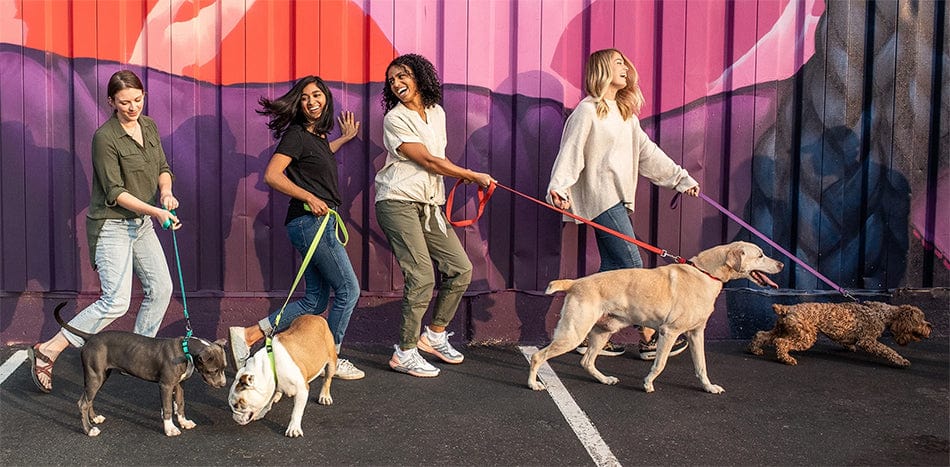Your cart is empty. Let's fix that!


A general rule of thumb to use: if the outdoor temperature is too hot or cold for you to be comfortable, it’s too severe for your dog. Just like us, they require layers, shade, or shelter to help protect them from the elements.
Dogs don’t have sweat glands as humans do. They sweat through their footpads but generally use panting to stay cool. This makes dogs susceptible to overheating and heatstroke. Humidity also plays a part in your dog’s safety. The higher the humidity, the higher the risk for your dog. When temperatures and humidity rise, it’s important that your pup has access to shade and plenty of fresh, cold water while outside. When a heat warning is issued, only walk your dog in the early morning or late evening, when temperatures cool off. Try to walk your dog in cooler grassy areas. If you must walk on the road or sidewalk, check the pavement first to ensure that it’s not hot enough to burn the sensitive pads on your dog’s feet.
Remember, dogs should NEVER be left unattended in cars, regardless of if the windows are open. The Humane Society notes that on an 85-degree day, a car with its windows partially rolled down reaches 102 degrees in only 10 minutes.
Anything under 45 degrees Fahrenheit can be unsafe for your furbaby and can cause hypothermia or frostbite. Since staying warm uses up extra energy, it’s important that dogs have plenty of food while playing outside in chilly weather. Additionally, they need to have a steady supply of non-frozen water.
During cold winter months, walk your dog during the warmest hours of the day, usually in the afternoon. Make sure that their paws are protected from ice, which can cause frostbite and cut the pads. Additionally, their feet need protection from salt and chemicals used on roads and sidewalks during the winter. Tolerance for the elements varies by breed type and size. Even breeds that are more resilient in the cold should not be left outdoors for long periods of time in below-freezing temperatures.
Hypothermia can be deadly. If you suspect your dog is suffering from this condition, move them out of the cold and seek immediate veterinary attention.
If you suspect your dog is suffering from heatstroke, spray them with water, or cover them in cool, water-soaked towels to lower their temperature. Provide them cool water and encourage them to drink, but don’t force it. Move your dog inside or to a shady area. Seek veterinary care immediately.
When the weather cooperates, there’s nothing better than a good outdoor hike, and Colorado has plenty of great spots. If the weather forecasts scorching or frigid temperatures that are too dangerous to play outside, we recommend these fun indoor activities!